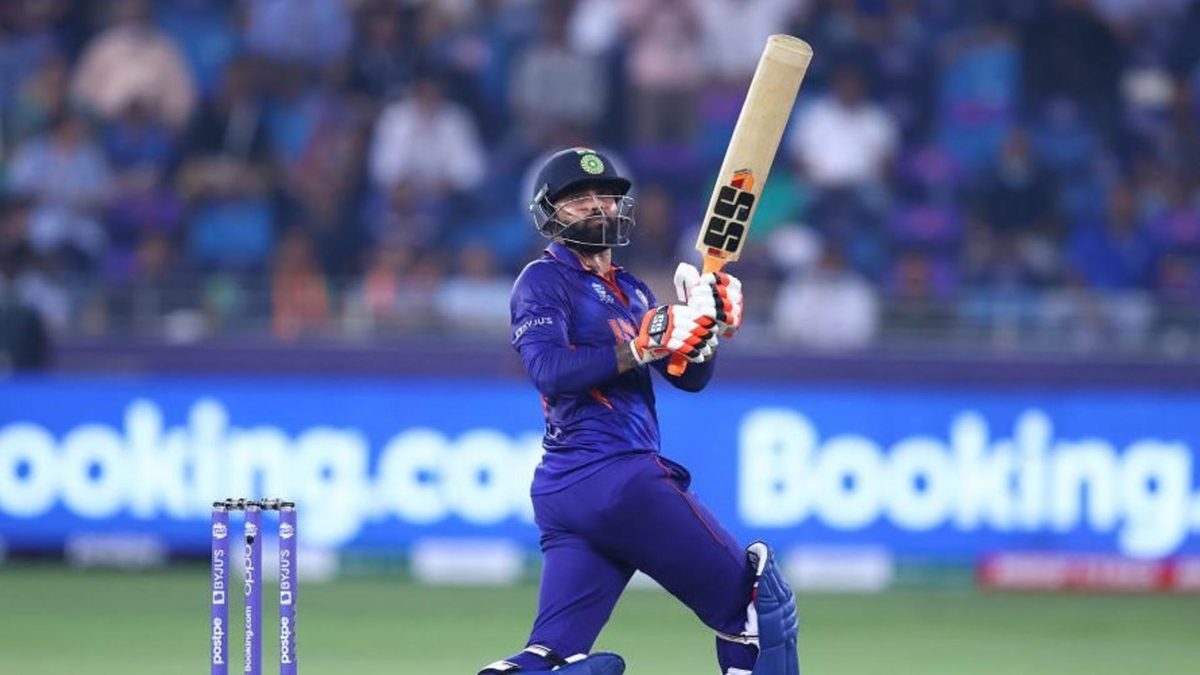
Over the past few years, not many Indian cricketers have generated as much excitement as Ravindra Jadeja. The Chennai Super Kings superstar has a knack of standing up to be counted and can, on his day, do everything a captain can ask for.
In T20Is, though, he hasn’t been able to fulfill his vast potential. During the early stages of his career, he was targeted by opposition batters. His accuracy, which is often his biggest weapon, became his greatest weakness because batters could line him up. There was also a school of thought that he didn’t fare well against left-handed batters – something that reduced his efficacy and forced captains to use him intermittently.
On the batting front, he seemed to lack the power game to dominate the death overs. He also struggled when rotating strike against spin. Since the start of 2020, however, things have changed a touch. A few of those frailties still remain (he is human after all) but he has seemingly evolved a mechanism to keep himself in the game at all times.
Jadeja has been brilliant with the ball in T20Is since 2020
During this period, he averages 17.3 with the ball in T20Is. He has only accounted for two left-handed batters but has done enough to hold his own against them. His economy rate, which stands at 6.42 is illustrative of that. His strike rate with the ball, too (16.1), is quite impressive for a spinner who usually plays a holding role.
With the bat, though, is where he has improved massively, especially towards the end of an innings. Since the start of 2020, Jadeja strikes at more than 200 in the last five overs of a T20 innings. On numerous occasions, he has bailed CSK out of trouble. More importantly, he has been willing to soak up pressure and capitalise at the end – a quality many felt he didn’t possess when he made his international bow. In fact, people have begun wondering why Jadeja has not been able to replicate his success with the Men In Blue.
The question might seem simple enough, considering the difference in level between the IPL and international cricket isn’t that much. The answer, however, is a little complicated.
At CSK, Jadeja has been banked upon to provide runs towards the end of the innings, and he has thrived lately. If anything, he has become their primary finisher – ahead of a certain MS Dhoni. That alone tells you how much he has grown in stature. In the 2021 edition of the IPL, Jadeja faced 156 balls. He scored 227 runs and did so at a strike rate of 145.51. The 156 balls he faced was the second-most he has done during any IPL season, and the most since the 2009 iteration. A year earlier, he faced 135 balls. Thus, it seems that CSK have trusted him more with the bat in recent seasons.
When donning the India jersey, he has only faced 82 balls during the same period – of which 18 came during the 2nd T20I against Sri Lanka. He has scored 141 runs at a strike rate of 176.25 and has also been dismissed only once. But for a player of his caliber, it just isn’t enough.
India promoted Jadeja at Dharamshala and reaped the rewards
Thankfully for him, Rohit Sharma, after the 1st T20I against Sri Lanka, suggested that they intended to bat Jadeja higher up the order. And, it is fair to say Jadeja didn’t disappoint.
If Jadeja were to bat higher up consistently, he would have the time to get acclimatised to his surroundings and prepare himself for an onslaught. He can rotate strike against spin decently and can keep things ticking too. He is very street smart – something that allows him to stay a step ahead of the bowlers. Most tellingly, though, he seems to have developed the ability to absorb pressure and then put his best foot forward.
Not many in India are blessed with that attribute. Jadeja, however, seems to have that in abundance. And that, especially in clutch situations, could be the difference between an exasperating defeat and a thrilling victory – much like it was at Dharamshala.
It is not necessary that a permanent batting spot is designated to him. Instead, it could be a provision where he, irrespective of who is slotted in next, bats when seven or eight overs are remaining. He can function as a floater without really being one, with his role towards the end clearly defined.
The final piece in India’s T20I jigsaw?
He is a pretty good T20 bowler and one of the best fielders in the world, meaning that his batting might not decide his place in the playing eleven. But as long as he isn’t given the requisite batting time, it will feel like a missed opportunity. And, that is only because Jadeja, despite not having great T20I batting numbers, is capable of so much more.
In the past few months, India have taken giant strides towards attaining T20I perfection. From that standpoint, a middle order enforcer of Jadeja’s ilk is probably the missing piece in their jigsaw.
For a large part of his early career, it didn’t seem he would cast himself into such a position. Now that he has, it is imperative that India and Rohit get the best out of him by continuing to bat him in the middle order.








